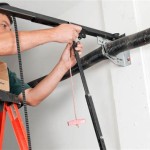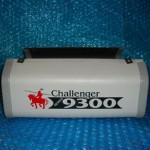What Insulation For Garage Walls
Garage walls need insulation to maintain a comfortable temperature inside the garage, reduce noise from the outside, and prevent condensation from forming on the walls. Several types of insulation can be used for garage walls, each with its advantages and disadvantages.
Fiberglass InsulationFiberglass insulation is the most common type of insulation used in homes and garages. It is made from tiny glass fibers that are held together by a binder. Fiberglass insulation is relatively inexpensive, easy to install, and has a high R-value (a measure of how well it insulates). However, fiberglass insulation can be itchy and irritating to the skin, and it can lose its effectiveness if it gets wet.
Cellulose InsulationCellulose insulation is made from recycled paper that has been treated with fire retardants and borates. Cellulose insulation is a good choice for garages because it is environmentally friendly, fire-resistant, and has a high R-value. However, cellulose insulation can be more expensive than fiberglass insulation, and it can be difficult to install in some applications.
Spray Foam InsulationSpray foam insulation is a type of insulation that is applied as a liquid and then expands to fill the space it is applied to. Spray foam insulation has a high R-value and can be used to insulate both the walls and the ceiling of a garage. However, spray foam insulation is more expensive than other types of insulation, and it can be difficult to install.
Rigid Foam InsulationRigid foam insulation is a type of insulation that is made from polystyrene or polyurethane. Rigid foam insulation is lightweight and easy to install, and it has a high R-value. However, rigid foam insulation is more expensive than other types of insulation, and it can be difficult to cut and fit.
Which Type of Insulation Is Best For Garage Walls?The best type of insulation for garage walls depends on the specific needs of the garage. If the garage is used for storage or as a workshop, then a less expensive type of insulation, such as fiberglass or cellulose, may be sufficient. However, if the garage is used as a living space, then a more expensive type of insulation, such as spray foam or rigid foam, may be necessary to achieve the desired level of comfort and energy efficiency.
How to Insulate Garage WallsInsulating garage walls is a relatively simple process. The first step is to remove any existing insulation from the walls. Then, the new insulation should be installed according to the manufacturer's instructions. In most cases, the insulation will be attached to the walls using adhesive or staples. Once the insulation is installed, it should be covered with a vapor barrier to prevent moisture from getting into the insulation.

Covering My Garage Walls With Plastic And Bubble Wrap Insulation

How To Insulate A Garage In Toronto Eco Spray Insulation
:max_bytes(150000):strip_icc()/101647625-ef8f117f9fb54743a28abab501043b98.jpg?strip=all)
Insulation Never Easier

Insulate Interior Garage Wall Insofast

Insulated Garage Door Installation Ventilation Benefits Pros Llc

Rigid Foam Insulation Installed Between Existing House And Garage Walls Building America Solution Center

How To Insulate A Garage

How To Insulate A Garage Step By

Which Insulation Is Best For Garage Walls Missouri

How To Insulate Your Garage In 6 Steps Dumpsters Com
See Also








